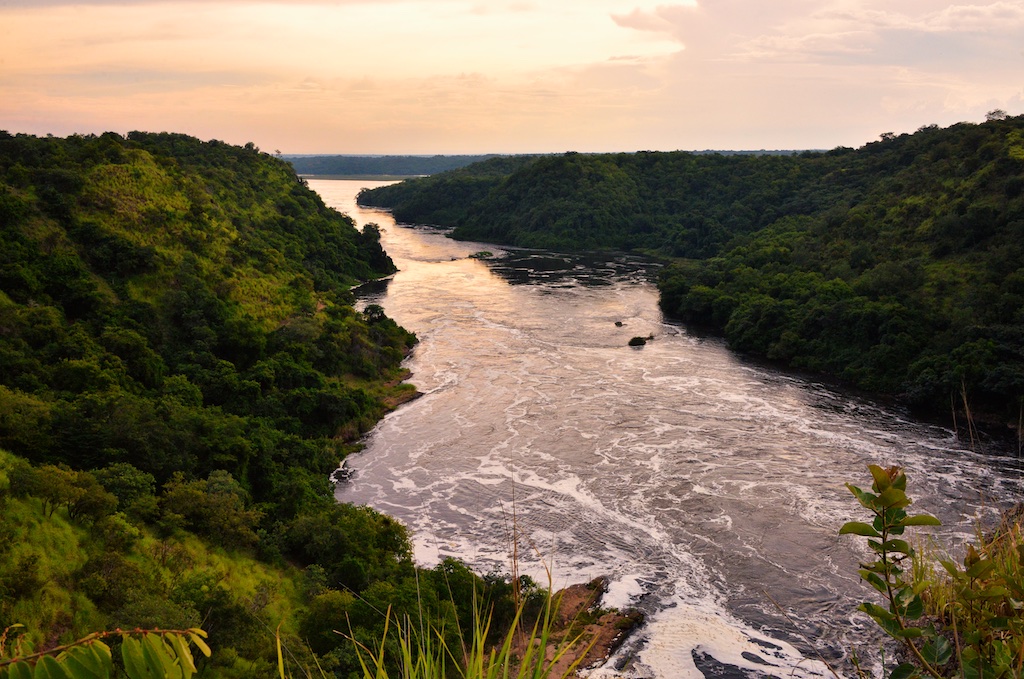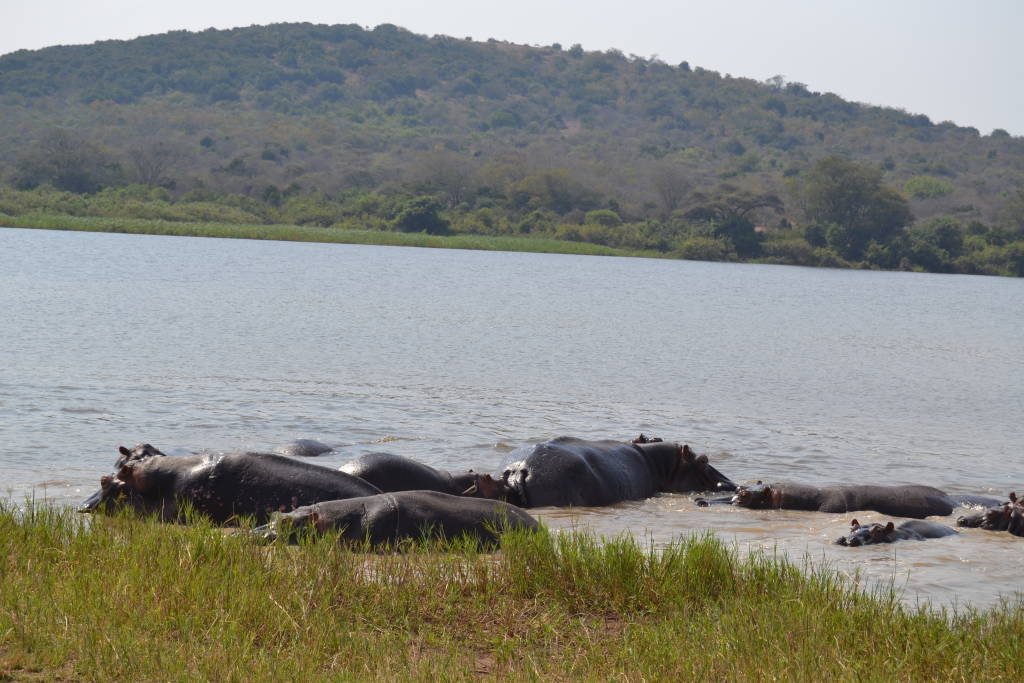6853 km long, 3.9 km wide, 9.5 meter deep – on average – with a discharge rate of 99,940 cubic meters per second and the longest water course on earth, the Nile River is arguably the 9th wonder of the world.

River Nile, also known as Happi; Egyptian for ‘well fed’, widely traverses the northern and eastern plains of Africa. The river provides water; the most important natural resource to eleven different countries first in East Africa after which it meanders north to water the desert plains of Sub-Saharan Africa before reaching its mouth at the shoreline of Egypt where it discharges millions of gallons of fresh water into the Mediterranean Sea.
The tributaries that form this great river emerge from two major sources; the Great lake region in Central and Eastern Africa and Lake Tana in the North Western part of Ethiopia. Flowing through Tanzania, Uganda, Rwanda, Burundi, Congo – Kinshasa, Kenya, Eritrea, South Sudan and Egypt, the Nile supports over 40 million lives and livelihoods alike and has now been termed the cradle of civilisation particularity in Egypt. The two major tributaries, commonly known as the White Nile and Blue Nile whose sources are Central and Eastern Africa respectively, marry at the heart of the Sudanese capital; Khartoum where the river begins its journey north, swimming through plains and valleys and birthing agricultural life in the desert plains of Egypt before dividing into the Mediterranean Sea.
Water that forms the White and Blue Nile comes from different sources in East Africa.
The White Nile, also known as the longest tributary of the longest river gathers its waters deep in the heart of East Africa, melted snow from Mt. Rwenzori and Mt. Bigugu together with rainfall from the remote and scenic rainforests of Rwanda and Burundi form streams that meander through four different countries, gathering in lakes such as Lake Edward, Lake Albert and Lake Victoria; the continents largest wetland. The outlets of these great lakes then merge and give rise to the White Nile which begins its epic journey through Uganda, creating the magnificent Murchison falls and South Sudan where it forms the vast Sudd Swamp before its entry into the capital of Sudan.
Water from the superior Blue Nile, the largest tributary of the longest river, originates from the rocky and lonely wilderness of Ethiopian highlands which are formed from the remains of volcanic activity. A spring at the base of Mt. Simien feeds Lake Tana, the main source of the Blue Nile. The south western outlet of this legendary lake known to have Jewish and Biblical history, sneaks out as a slow steam but soon forms great waterfalls such as the Tissisat Falls, Ethiopian for; smoke of fire. The river flows through pure wilderness, wandering through the beautiful valleys of the Blue Nile Gorge for over 1000 kilometres. The tributary is known to carry silt as it meanders along, providing fertility to agricultural land along its banks up to and beyond the Egyptian desert. Having descended down the steep plains of it home country, the Blue Nile crosses borders into Sudan, streaming into Khartoum where is silently joins forces with its counterpart; the White Nile. These two tributaries now become one, ultimately forming the world’s longest river. River Nile. It epic journey north begins here, in the Sudanese’s capital; one of Africa’s largest cities.

Life radiates from its magnificent deltas which harbour hundreds of species of both flora and fauna which flourish all year round. Popular biotic systems of the river include the Nile crocodile, Wildebeests, Nile Tilapia, Papyrus, Blue Egyptian Water Lilies and many others. As the river leaves Ethiopia for Egypt, it enters into Nubia winding through to Lake Nasser before later appearing in Cairo, Egypt’s capital. River Nile is the only Saharan river that survives all year through the desert, sustaining all desert life, it flows through a world of sand before it reaches its destination at the Mediterranean.
As the Nile leaves Cairo, it splits into many branches, two of which end up in the Mediterranean Sea; the Damietta in the east and Rosetta in the west as fresh water mingles with the sea water after the river finally empties itself.
At the Nile River Delta; corn, wheat and rice provide Egypt with its major agricultural products, while Egyptian cotton, the country’s most popular commodity is grown along the rivers banks. Before the construction of dams upstream, the river would flood its banks in Egypt once a year, depositing fertile silt for agricultural land, but though silt has been obstruction from getting to some river banks the Aswan Dam has proved to be of great gain, generates electricity for the entire country.
Back in East Africa, where the White Nile originates countries have benefited enormously from the great river source. Fishing booms in the shores of Lake Victoria as Kenya have built a reputable fish exporting industry, Papyrus reeds from Uganda… has yielded agricultural fruit.
At the source of the Blue Nile however, a different story is told. Ethiopia’s Tana Lake may be the largest contributor to the Nile River but despite is water wealth, its problem has been the crippling inability to use a vast percentage of its own water. Destitute of agricultural practises the country has been forced to strongly rely on food aid. Though the country benefits from Papyrus trade, over the years many have realised that the oft repeated phrase about Egypt’s relationship with the river applies strongly to Ethiopia; ‘The Nile belongs to all, and yet one.’
As this beautiful and phenomenal river stretches through Africa, it indeed is a wild paradise, but over the year’s increased human activity has seen Egypt and now, other countries like Ethiopia use the river for development. History narrates that in 1929 a treaty was signed between Egypt and Great Britain which gave Egypt the power of veto over the Nile River which meant that the Egyptians had the authority to stop any upstream developments from affecting the flow of water up north. 80 years have hence gone by and currents have taken a sudden turn. The Nile having already contributed significantly to Egypt’s economic development through the Aswan Dam and other proposed irrigation projects, the lack of economic progress in Ethiopia at the expense of Egypt’s well-being has caused a bone of contention. In 2011 the Ethiopian government announced that it would be constructing four large dams on the Nile, including one of the largest in the world, the Grand Ethiopian Renaissance Dam. At first, foreign investors had been reluctant to show interest in the project due to the high potential of conflict but the Ethiopian government has now declared that the country will single handedly fund the project itself. Considering the fact that the Blue Nile contributes 85% of Niles water, projections have shown that the current construction of Ethiopia’s dams may possibly cut off a significant proportion of the Nile water that flow through Egypt, which will in turn affect the Egyptians economy and jeopardise its survival. Egypt has since threatened war against Ethiopia but dam construction goes on and it has now become apparent that unlike the 20th Century which saw oil cause global strife, the wars of the 21st Century will be over water, with the Nile, the longest river in the world, being the centre of the conflict.
Despite recent disputes that countries have been involved in over the Nile River, it remains a magnificent wonder. Flowing through eleven different African countries, valley and gorges, floating through rainforests and deserts while offering some of the most graceful sites in Africa, whether in slow streams or falls the river remains unmatched as it journeys passed monuments and mountains through lush fields and urban expanses.
– By Unelker Maoga
